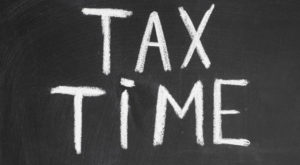 My latest MoneySense column takes a look at the supposed “tax nightmare” new retirees sometimes face on the forced annual (and taxable) withdrawals of Registered Retirement Income Funds or RRIFs. Click on the highlighted headline for the full article: How to avoid tax payment nightmares when the RRIF withdrawals start.
My latest MoneySense column takes a look at the supposed “tax nightmare” new retirees sometimes face on the forced annual (and taxable) withdrawals of Registered Retirement Income Funds or RRIFs. Click on the highlighted headline for the full article: How to avoid tax payment nightmares when the RRIF withdrawals start.
It’s a simple idea really. Salaried employees take for granted the automatic deduction of income taxes “at source.” They receive their regular paycheque with “net” or after-tax deposits that go directly into their bank accounts.
RRIFs are famously taxable: once you reach the end of your 71styear, you are required to pay an ever-rising minimum percentage withdrawal, all fully taxed like earned income or interest. However, notes Aaron Hector, a financial planner with Calgary-based Doherty & Bryant Financial Strategists, there is no mandatory withholding tax on RRIFs, unlike the 10, 20% or 30% tax that must be withheld at source on RRSP withdrawals (which rises with amount withdrawn.)
Fortunately, you can ask your financial institution to deduct tax at source every time you make a RRIF withdrawal. Alternatively, new retirees or semi-retirees may wait till 71 to start a RRIF but choose to withdraw money from their RRSP whenever they need it during their 60s. Here, the problem is the minimum withholding required can prove to be inadequate if you take out chunks of RRSP cash that are too small. Take them out in $5,000 chunks or less and the 10% (5% in Quebec) withholding tax is unlikely to be sufficient once you file your annual return.
Try and take out at least an amount between $5,000 and $15,000, which results in a 20% withholding tax (10% in Quebec.). Better yet, make the withdrawals $15,000 or more and pay the 30% withholding tax (15% in Quebec). Don’t fret that this may be “too much” tax: if so, it will be rectified once you file your next tax return. You can find a summary of RRSP withholding rates at this Government of Canada website.
Hector says RRIF withdrawals in excess of the minimum annual required payment are treated the same as regular RRSP withdrawals for withholding tax. So if your minimum RRIF payment one year is $50,000 but you withdraw $100,000, the extra $50,000 will be taxed at 30% on withdrawals and come tax time, you’d pay tax on the entire $100,000. You can elect to have taxes withheld at source on the minimum RRIF payments as well: Hector estimates a third of his clients do just that. Others may end up making quarterly tax installments instead.
This situation is aggravated by the fact non-registered investment income is typically taxable. Fortunately, you can choose to deliberately overtax yourself as you go on many common sources of retirement income: if you receive pensions from former employers and/or the Government (CPP, OAS), you can set things up to mimic the “taxed at source” setup salaried workers have. While not mandatory, pension administrators will deduct whatever percentage of tax you wish to arrange with them, whether a minimal amount or a near-confiscatory 50%, or somewhere between those extremes.
In my case, I set 30% as my withholding tax on corporate pensions, 25% on OAS and eventually the same amount for CPP. You may feel small pensions don’t have to be taxed at source if they are less than the Basic Personal Amount that is tax free to everyone: $11,809 in 2018, $12,609 in 2019.
The alternative is quarterly tax installments. Retired advisor Warren Baldwin says theCRA sends notices for payments based on simple arithmetic applied to the previous year’s taxes. “So if, for example, 2017 was a high-income year and you had a high tax liability on filing, CRA will request large payments in March and June of 2019. If income and the liability declines in 2018/19, then you might have overpaid and need to wait until spring of 2020 for the refund.”
Ideally, things will balance out when it comes time to file your taxes: if you went overboard in taxing yourself at source, you may end up with a refund; if you underestimated your taxes due, you may end up having to cut yet another cheque to Ottawa. Some object to giving the CRA an “interest-free” loan but personally, I’d rather receive a small refund than have to pay still more at tax time.


